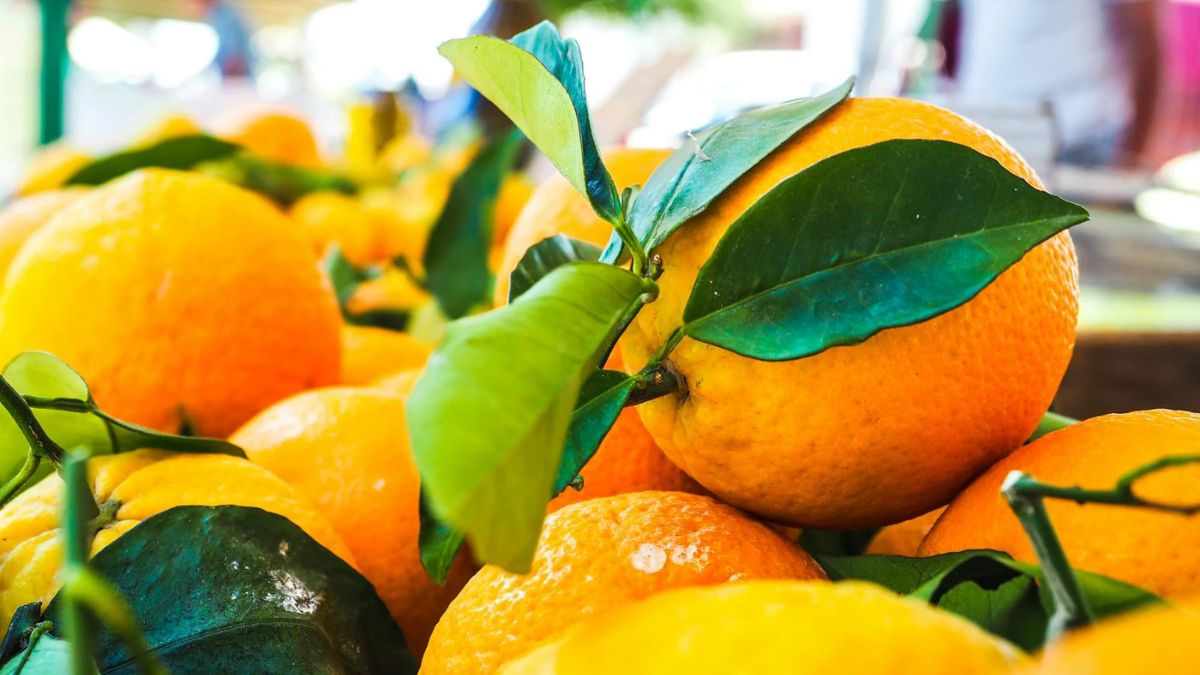Oranges, those ubiquitous symbols of sunshine and Vitamin C, hold a treasure trove of interesting facts beyond their bright color and tangy taste. Delve into this article to discover ten fascinating truths about these delightful citrus fruits.
01: A Hybrid History
Contrary to popular belief, oranges aren’t a single, original fruit. They are actually a hybrid, believed to be a natural cross between pomelos (a large, sour citrus fruit) and mandarins. This genetic fusion likely occurred in Southeast Asia thousands of years ago, giving rise to the sweet and juicy orange we know today.
02: A Unique Fruit Structure
Oranges, along with other citrus fruits, belong to a unique fruit category called hesperidium. Unlike most fruits with a single pit in the center, a hesperidium has multiple seeds encased in individual segments. The juicy flesh surrounding these segments is derived from the ovary wall of the flower, while the white, bitter pith (albedo) is derived from the fruit’s rind.

03: Beyond the Classic Orange
The vibrant orange color we associate with these fruits isn’t the only option. The pigments responsible for the orange hue – carotenoids like beta-carotene – are present in varying degrees. This variation leads to a spectrum of orange shades, with some varieties like Cara Cara oranges boasting a pinkish blush on their rind. Greenish oranges, like the unripened Valencia variety, simply haven’t yet developed their full carotenoid content.
04: A Bittersweet Powerhouse
The white, bitter pith (albedo) of an orange, often discarded, contains a powerful flavonoid called naringenin. This compound offers potential health benefits, including anti-inflammatory and blood sugar regulation properties. Research is ongoing to explore the full potential of naringenin, but it suggests that even the discarded parts of the orange may hold hidden value.
05: From Flavedo to Flavor
The outermost colored layer of the orange rind, known as the flavedo, is packed with essential oils that contribute significantly to the fruit’s aroma and flavor. These oils, extracted for use in food flavorings and perfumes, are what give oranges their characteristic citrusy scent. Next time you peel an orange, take a moment to appreciate the delightful fragrance emanating from the flavedo.

06: More Than Just Vitamin C
While oranges are undeniably a rich source of Vitamin C, essential for immune function and collagen production, their nutritional profile goes beyond this single vitamin. They are also a good source of dietary fiber, which aids digestion, and folate, important for cell growth and development. Additionally, oranges contain potassium, which helps regulate blood pressure, and calcium, crucial for bone health.
07: The Lifecycle of an Orange Tree
Orange trees are evergreen, meaning they retain their leaves year-round. They produce fragrant white blossoms that can self-pollinate or cross-pollinate with other citrus trees. Pollination leads to the development of small green fruits, which take several months to mature into the juicy oranges we enjoy. Interestingly, orange trees can flower and bear fruit multiple times a year, depending on the variety and climate.
08: Global Orange Growers
Oranges thrive in warm, subtropical climates. Major orange-producing countries include Brazil, the undisputed leader, followed by countries like China, India, the United States (particularly Florida and California), and Mexico. These regions provide the ideal balance of sunshine, warmth, and moisture necessary for optimal orange cultivation.

09: Beyond the Supermarket
Oranges are incredibly versatile fruits, enjoyed fresh, juiced, or used as a flavoring agent in various culinary creations. The zest (the grated outer layer of the rind) adds a vibrant citrusy touch to baked goods, savory dishes, and even cocktails. Orange marmalade, a delicious spread, is another popular way to enjoy the unique flavor profile of oranges. The fruit’s segments can also be candied or dehydrated for a sweet and tangy snack.
10: A Sustainable Choice
Orange peels, often discarded, hold potential for sustainable practices. They can be composted to enrich soil or upcycled into useful products like biofuels or cleaning solutions. Extracted orange oil can be used in eco-friendly cleaning products, while the remaining pulp can be utilized in animal feed or even for biofuel production. By finding innovative ways to use all parts of the orange, we can minimize waste and promote a more sustainable approach to enjoying this delightful fruit.
A Celebration of the Humble Orange
From their fascinating hybrid origins to their diverse nutritional profile and potential for sustainable practices, oranges offer a treasure trove of interesting facts. The next time you reach for this refreshing fruit, take a moment to appreciate its rich history, unique anatomy, and the multifaceted role it plays in our lives. So, peel, savor, and explore the world of oranges – a world filled with sunshine, flavor, and hidden wonders.










